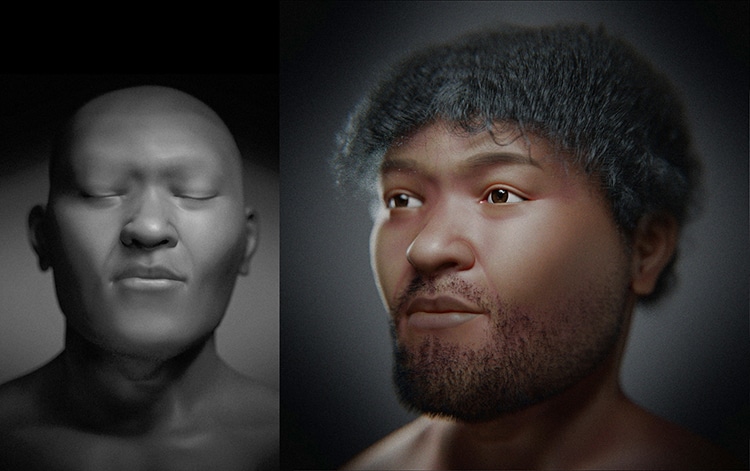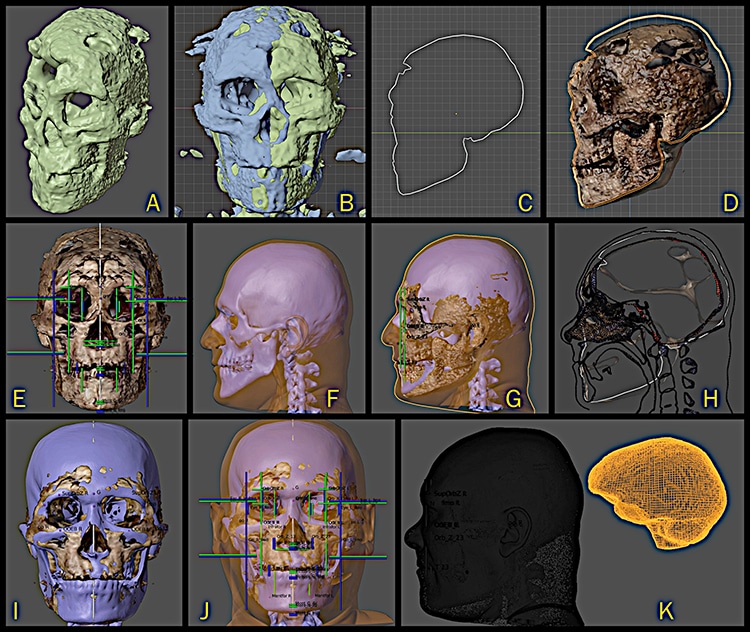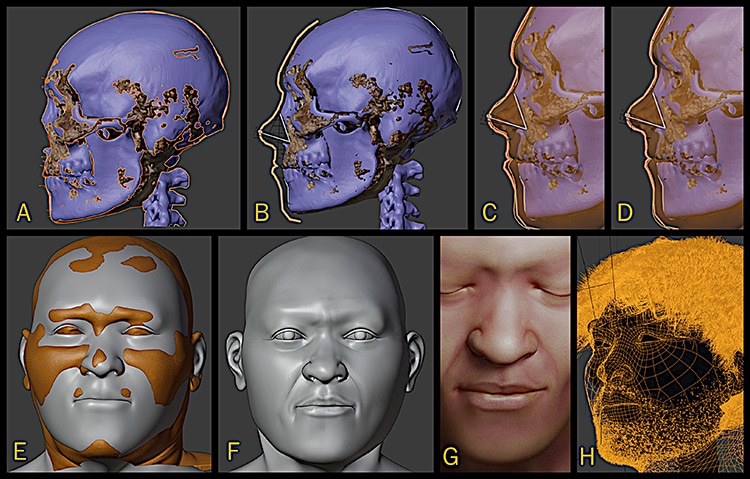A reconstruction of the Nazlet Khater 2 skull gives insight into a character from the past.
Starting with an ancient skull, the Paleolithic face they created is based on science with artistic decision-making.
It allows viewers to feel close to this historic human.

A reconstruction of the Nazlet Khater 2 skull gives insight into a character from the past. (Photo:Moacir Elias Santos and Cícero Moraes,CC BY 4.0)
The skeleton was largely complete except for some feet and hand portions.
He is of African ancestry and would have hunted and gathered in a nomadic lifestyle.
This is within the Upper Paleolithic, around the time the earliestmodern human settlementsandfigurative artappeared.

Photo:Moacir Elias Santos and Cícero Moraes,CC BY 4.0
The skeleton predates thefirst pharaohby over 25,000 years.
To recreate his face, the researchers began with photographs of his skull.
Using a technique called photogrammetry, the team first digitally reconstructed the skull, which was missing a piece.

Different angles of facial reconstruction. (Photo:Moacir Elias Santos and Cícero Moraes,CC BY 4.0)
They then digitally added flesh.
To balance the scientific and the artistic, they created two images.
One is a neutral, greyscale, minimalist approximation.

Skull photogrammetry and initial anatomical deformation help to “recall” the skull. (Photo:Moacir Elias Santos and Cícero Moraes,CC BY 4.0)
The other adds a beard, twinkling eyes, and color to bring the reconstruction to life.
Different angles of facial reconstruction.
Skull photogrammetry and initial anatomical deformation help to recall the skull.

Completing the facial approximation. (Photo:Moacir Elias Santos and Cícero Moraes,CC BY 4.0)
(Photo:Moacir Elias Santos and Cicero Moraes,CC BY 4.0)
Completing the facial approximation.